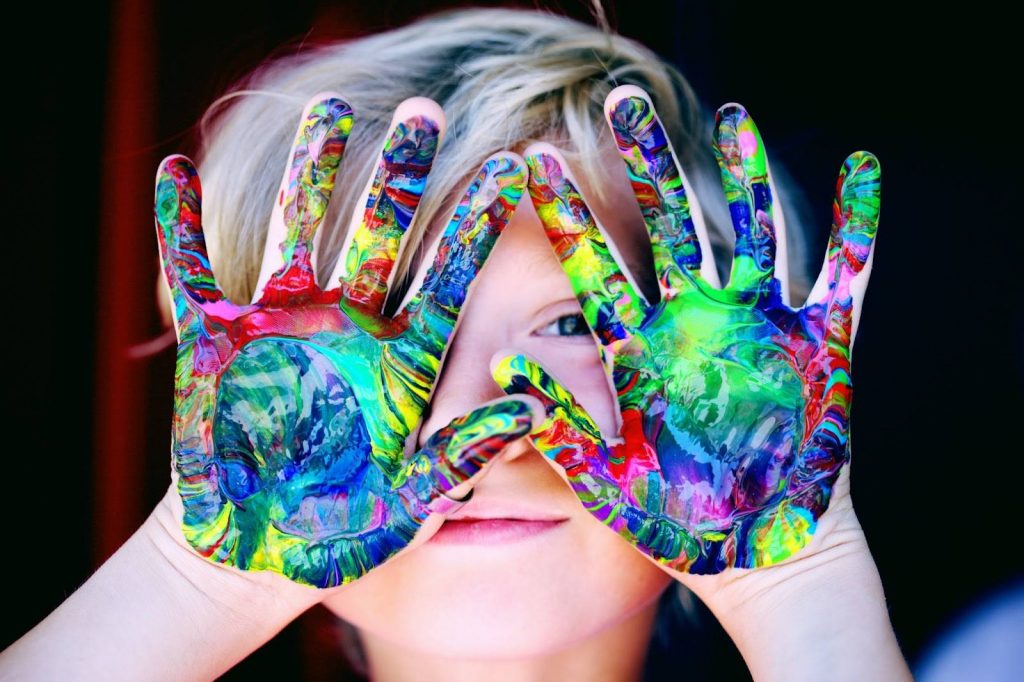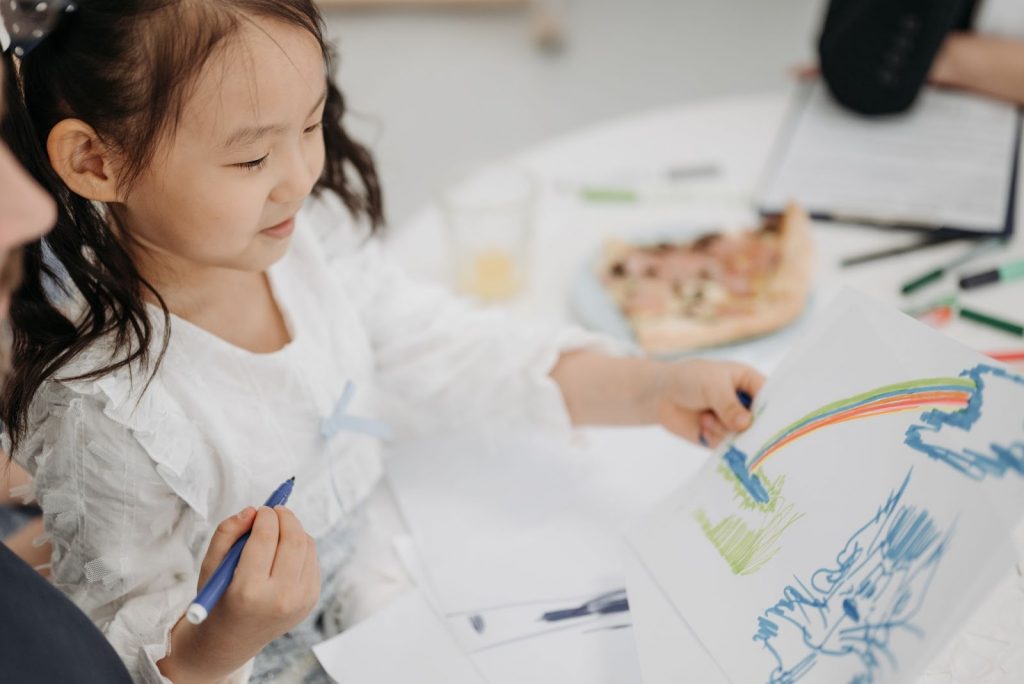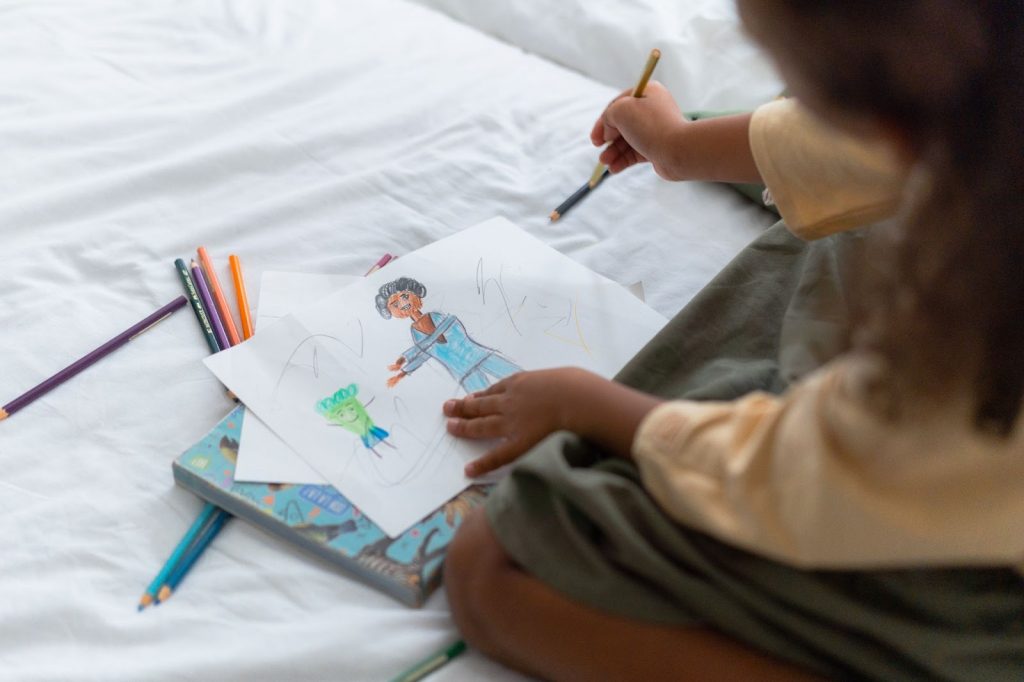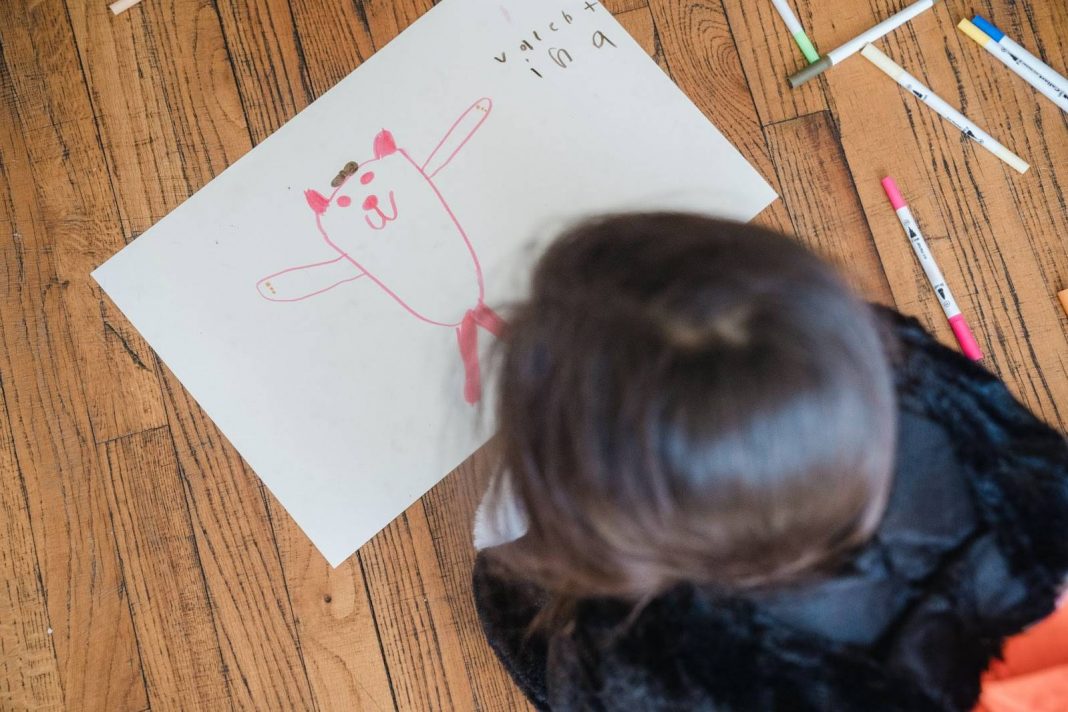When do kids learn colors? Many parents and educators ponder this subject, especially those working with young children. A child’s cognitive and intellectual growth depends on their ability to recognize colors. An NIH report says that a significant percentage of perceptual development, including the ability to recognize objects and express emotions, usually occurs in the first year following birth.
Math & ELA | PreK To Grade 5
Kids see fun.
You see real learning outcomes.
Watch your kids fall in love with math & reading through our scientifically designed curriculum.
Parents, try for free Teachers, use for free
In our daily lives, colors are crucial. Parents and teachers may better assist children’s learning and growth by providing the right tools and resources and being aware of how and when do kids learn colors. The intriguing process of a child’s color learning will be examined in this article.
Related Reading: 7 Colors of the Rainbow and Their Meanings
8 Ways To Teach Children About Colors
Teaching young children about colors can be done in many different ways, but the most crucial thing is to make it fun and enjoyable for them. There are many proven methods you can use to teach your child about colors and understand when they learn them.
“Colors are an important part of children’s lives. They can influence their moods, promote learning, and inspire creativity. That’s why providing them with a colorful environment stimulates their senses and encourages their natural love for color is important.” – Karen Levine, early childhood education expert.
- Play-Based Learning: Most of the time, children learn new things easily while playing. Incorporating games like color matching, treasure hunts, or manipulating different objects can teach kids about colors.
- Arts & crafts: In order to develop their creative skills and understanding of color, parents can encourage their kids to mix colors to make unique color schemes.
- Color Sorting Games: Sorting objects by color and matching colored cards are two games that help kids identify and categorize different hues.
- Storytelling: Introducing children to various colors and how they are utilized in the world through books or storytelling can be a fun approach to teaching them about color theory.
- Colorful Food: Serving meals with color to children can be a pleasant approach to introducing them to color. Kids should be encouraged to identify each hue on their plates.
- Color Walks: By taking part in color walks, kids can learn about colors in the actual world. They recognize and point out different colored objects in their environment.
- Colorful Sensory Bins: Sensory bins loaded with objects of various hues can aid youngsters in exploring and discovering color through touch and vision.
- Colorful Science Experiments: Children can learn about colors and how they interact by participating in science experiments that involve mixing colors, such as making a rainbow or a color volcano.
By incorporating these fun and engaging methods, parents and educators can help children learn about colors educationally and enjoyably.
Now that we’ve explored some effective methods to teach children about colors, it’s important to understand when do babies learn colors. Parents and educators can better support children’s color learning journey by knowing the average age range for color learning milestones. Let’s take a closer look at when children should learn colors.
Related Reading: Painting Ideas Kids Can Have Fun With & Easily Pull Off
3 Stages Of Kids Knowing Colors

“When do toddlers know colors” is a common question parents often ask because learning colors is an essential milestone in a child’s development. As a parent or teacher, it’s necessary to know the average age range for each stage of color learning to support your child’s progress. Let’s explore each step of color learning in more detail.
“Color recognition is a developmental milestone that varies from child to child. Some children may learn colors earlier or later than others, but it typically occurs during the preschool years.” – Dr. Kimberly Eckelmann, an early childhood education expert.
Stage 1: Recognizing Colors
Babies can distinguish between colors at around six months old, but only when they are about 8 to 12 months old can they recognize colors consistently. Signs of progress include pointing to objects of a certain color or showing a preference for a particular colored toy.
Stage 2: Naming Colors
Between the ages of 2 to 3 years old, children begin to learn the names of colors. It’s necessary to remember that every child develops at their own pace, and some may only be able to name colors once they are closer to 4 years old. Signs of progress include correctly naming at least three colors.
Stage 3: Categorizing Colors
Around the age of 4 to 5 years old, children begin to categorize colors into groups (e.g., primary and secondary colors). They may also begin to understand color mixtures and how colors can be used to express emotions. Signs of progress include accurately categorizing colors and understanding color mixtures.
When do kids learn colors? Some kids find it simpler to learn colors in a classroom or playgroup environment while others may struggle with this task. This may be a frustrating and confusing experience for both the child and the parent. We will now explore some common challenges in color learning and discuss ways to overcome them. Let’s dive in.
4 Challenges in Learning Colors

Although learning colors may seem like a straightforward process, it can be difficult for some kids. Following are some typical difficulties kids may encounter when learning about colors, along with suggestions for overcoming them.
1. Color Identification
Color identification is one of the first difficulties that young children encounter. Some kids could have trouble distinguishing between various hues or recognizing colors in other situations. Parents and teachers can use actual items and examples to teach kids about color to get around this obstacle. For instance, children can connect colors and commonplace objects by pointing out the colors of foods, toys, and clothing.
2. Naming of Colors
The next difficulty for kids is to name the colors after they can recognize them. Some kids might want assistance remembering the names of the colors or mixing them up with other words. You can utilize rhymes, songs, and games that emphasize color recognition and naming to assist youngsters in learning color names.
3. Color Categorization
Children must learn to group similar colors and understand the differences between shades and hues. To help children with color categorization, you can use color-sorting games and activities that encourage children to match and group colors together.
4. Lack of Interest in Learning Colors
Some children may need to show a stronger interest in learning colors, which can make the learning process frustrating for parents and educators. Parents and educators can make the learning process fun and engaging by using games, activities, and real-life examples to overcome this challenge.
These are the major challenges to be seen. As parents and teachers, we must be aware of when do kids learn colors and keep in mind that some kids could have trouble learning colors, and others might have developmental problems that hinder their capacity. Now, look at some of these developmental problems and how parents and teachers can help.
3 Developmental Issues in Learning Colors
A child’s growth includes the fascinating and crucial process of learning colors. However, a child’s capacity to learn colors can be impacted by specific developmental problems.
1. Color Blindness
The condition of color blindness is frequent. According to an NEI survey, 0.5% of women and 8% of men have the common type of red-green color blindness. A child’s ability to discern between various colors, notably red and green, is hampered by an inherited illness. To help your color-blind child learn colors, you can employ several strategies and tools. Use colored tapes, labeled drawings, or labels on labels to teach your child about colors.
2. Attention Deficit Hyperactivity Disorder (ADHD)
Children with ADHD may have trouble concentrating and struggle to learn colors. They could be tasked with color matching or distinguishing between various color tones. Parents and teachers can use visual aids like color charts or flashcards to help these kids learn colors. It might also be beneficial to divide the learning process into more digestible chunks.
3. Language Delay
The issue of language delay presents a formidable challenge for children who may struggle to grasp concepts such as colors due to communication and language comprehension difficulties. To mitigate these challenges, parents and teachers can utilize the power of repetition and consistent color labeling and employ basic language and real-life examples to reinforce learning.
After understanding when do kids learn colors and the major challenges that can occur in learning, let’s delve further into this topic and examine how to determine if your child is color-blind, a condition that affects millions of individuals worldwide and can be particularly difficult to diagnose in young children.
How To Know If Your Child Is Color-Blind?
As parents, we frequently worry about how well our kids are growing and developing, particularly their ability to see color. Nevertheless, it might be difficult to diagnose color blindness in early childhood. Fortunately, some methods can help detect color blindness in young children. If you think your child may be color-blind, the following are warning signals to watch out for and action items you may use.
Signs of Color Blindness
- Difficulty distinguishing between hues of red and green, a common indicator of color blindness.
- Confusing shades of blue and purple, a potential symptom of color blindness that warrants attention.
- Trouble with other color combinations
- Struggling to recognize colored objects
- Difficulty reading color-coded materials
For additional testing, speak with your child’s pediatrician or an eye expert if you detect these symptoms. Early detection and intervention can dramatically impact your child’s capacity to perceive and comprehend color.
Coping with Color Blindness
- Awareness and education
- Color-coded equipment
- Glasses for correcting color vision
It is important to equip your kid with the necessary resources and ample support to navigate their color vision deficiency. The management of their day-to-day activities can be dramatically influenced by making them aware of their ailment and by fostering an environment encouraging them to express their needs and wants.
Not only is it crucial to be aware of the indications of color vision impairment in children, but it is also of the utmost importance to comprehend the significance of color education. The value of color learning for a child’s cognitive and emotional growth will be discussed in greater detail in the next section.
5 Reasons Why Learning Colors is Important

The significance of learning colors is essential for children due to their omnipresence. The importance of learning colors cannot be underscored enough, as they are deeply significant to our quotidian existence. Colors play a pivotal role in our ability to express ourselves and grasp the world around us, from recognizing objects to articulating emotions.
“Children love bright colors and are drawn to them instinctively. Colors help them to make sense of the world around them and express themselves creatively.” – MaryAnn F. Kohl, art educator and author.
1. Colors are Everywhere
Colors are all around us, from the food we consume to the clothes we wear. A key ability that aids youngsters in making sense of the world is recognizing and naming colors. Children should learn colors since they are crucial for communication and self-expression.
2. Boosting Imagination and Creativity
Children’s imagination and inventiveness can be greatly expanded by using color. Exposing kids to various colors and encouraging them to use their imaginations will help them create beautiful artwork and explore their creativity.
3. Boosting Language Development
Language development in kids can be greatly accelerated by teaching them about colors. They develop their language abilities and gain new vocabulary as they discover the names of various colors. Parents and educators can give youngsters a fun and engaging approach to developing their language abilities by incorporating color into ordinary talks.
4. Preparing for Academic Success
A crucial ability that lays the groundwork for academic achievement is knowing colors. It aids kids in acquiring the cognitive and linguistic skills necessary for academic success. Children who learn colors also learn to recognize patterns and group information, which is crucial for math and science.
5. Development of Cognitive Capabilities
Being able to name and recognize colors is simply the beginning of learning about colors. It entails the growth of numerous cognitive abilities, including memory, attention, and perception.
According to a research article published by the National Library of Medicine, thinking, perception, concentration, and memory are only a few of the interrelated mental processes that make up human cognition. Storing and recalling environmental information is a basic cognitive function of memory. The goal of memory research has been to increase information retention and recall. One surprising conclusion is that colors can improve memory.
Children must use their visual discrimination abilities to identify and classify colors, which can help their cognitive development.
Related Reading: Indoor Games For Kids that Improve Memory, Cognition, & Creativity
Conclusion
Learning colors is important to a child’s cognitive and intellectual development. By understanding what age do kids learn colors and the factors that influence it, parents and educators can provide the right tools and resources to support their learning and growth.
Using play-based learning, arts and crafts, color sorting games, storytelling, and singing and dancing can make color learning a fun and engaging experience for children. Remember to be patient, use simple language, encourage exploration, and celebrate progress to help children develop a love for learning. So, let’s start teaching colors to our kids today and watch them blossom into creative and curious learners.
Frequently Asked Questions (FAQs)
Can color blindness influence a child's capacity to learn colors?
A child who is color blind could have trouble telling some hues apart, which makes learning about color more challenging. With the correct support and resources, color-blind kids can still learn about different hues.
What are some methods for getting kids interested in learning about colors?
Play-based learning activities should be incorporated to increase the kid-friendly appeal and amusement of the color-learning process.
Is there any correlation between the comprehension of colors and the advancement of children in other domains?
Through acquiring knowledge of colors, children can enhance their proficiency in problem-solving, language, and fine motor skills.
























